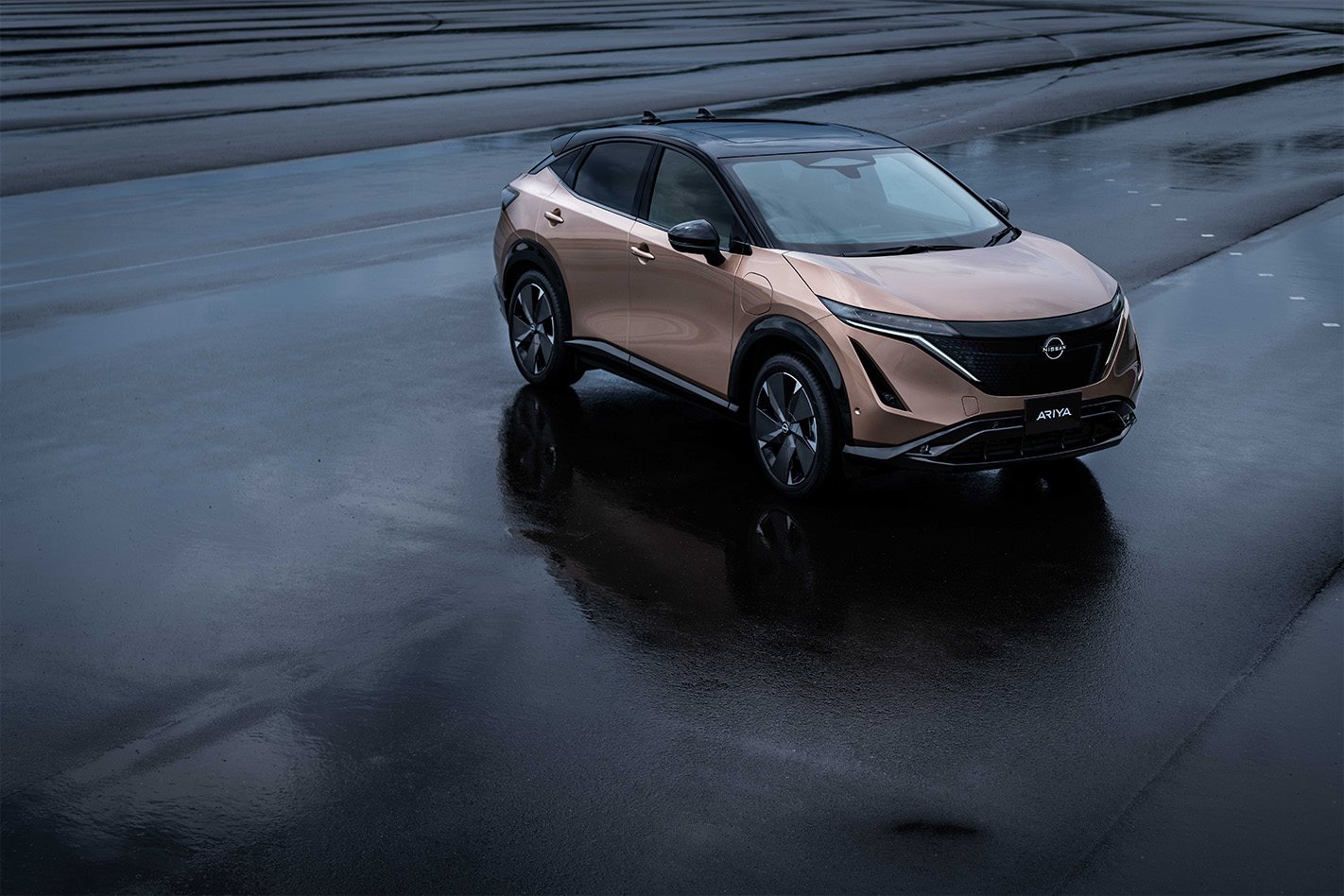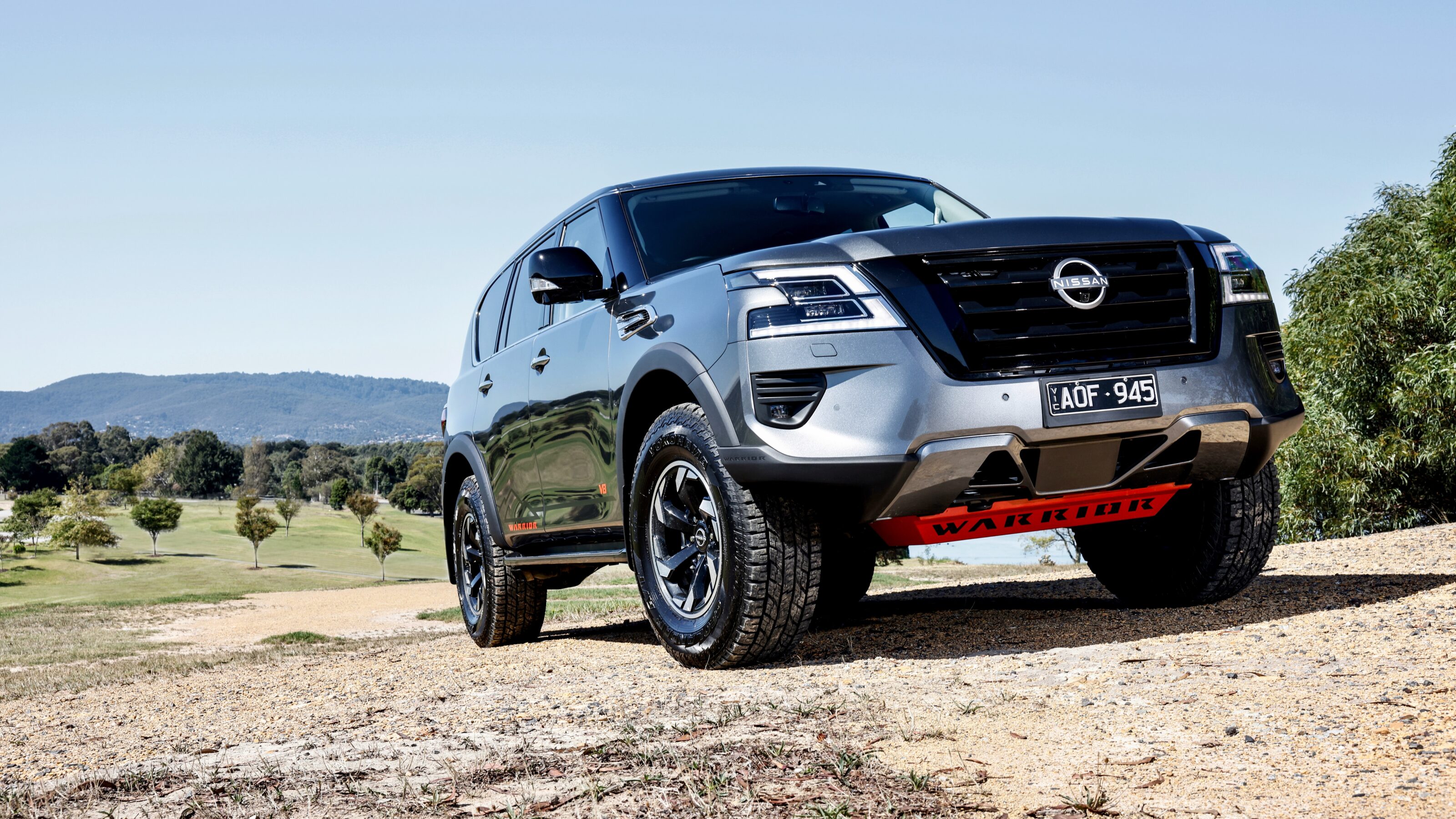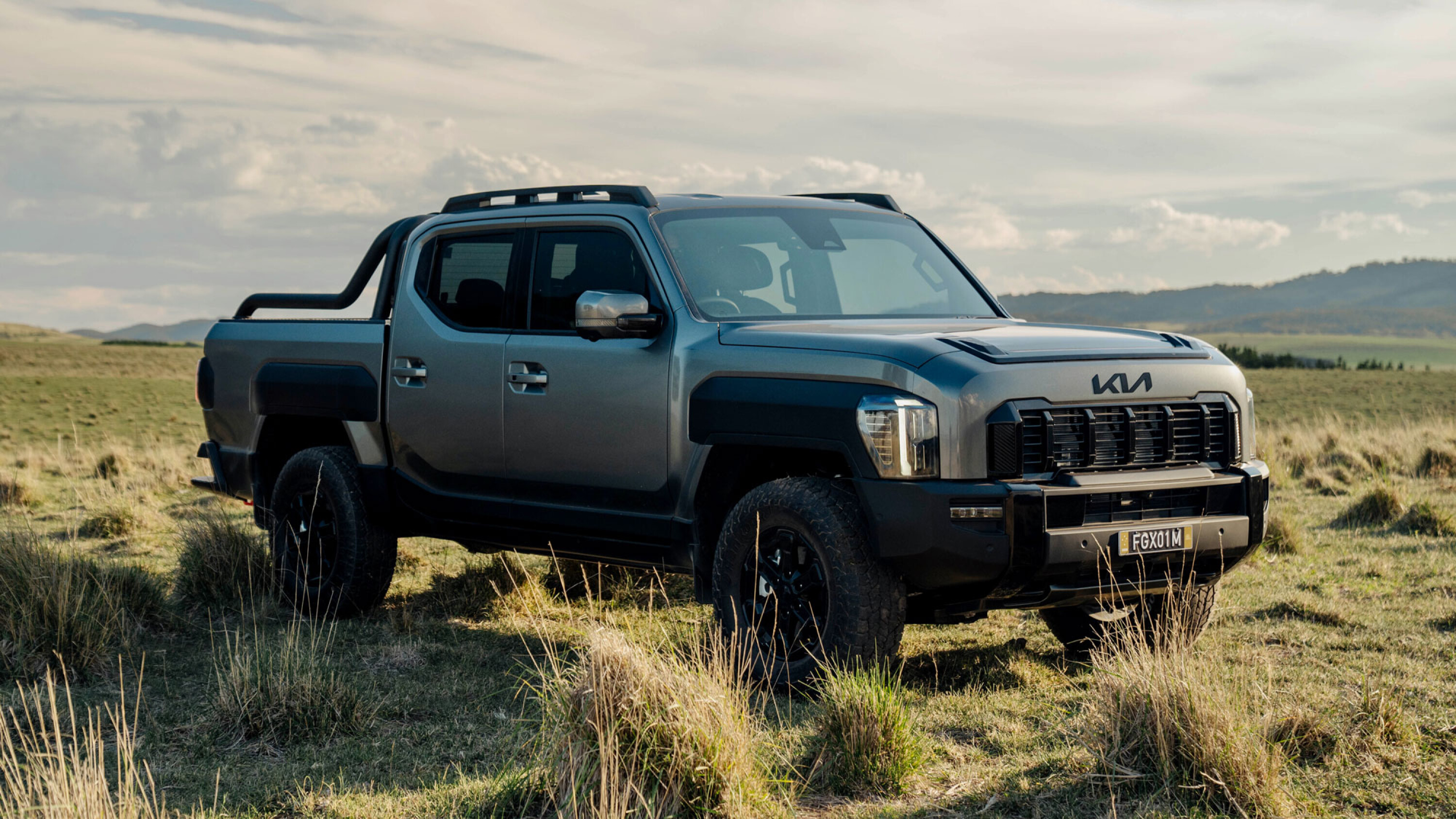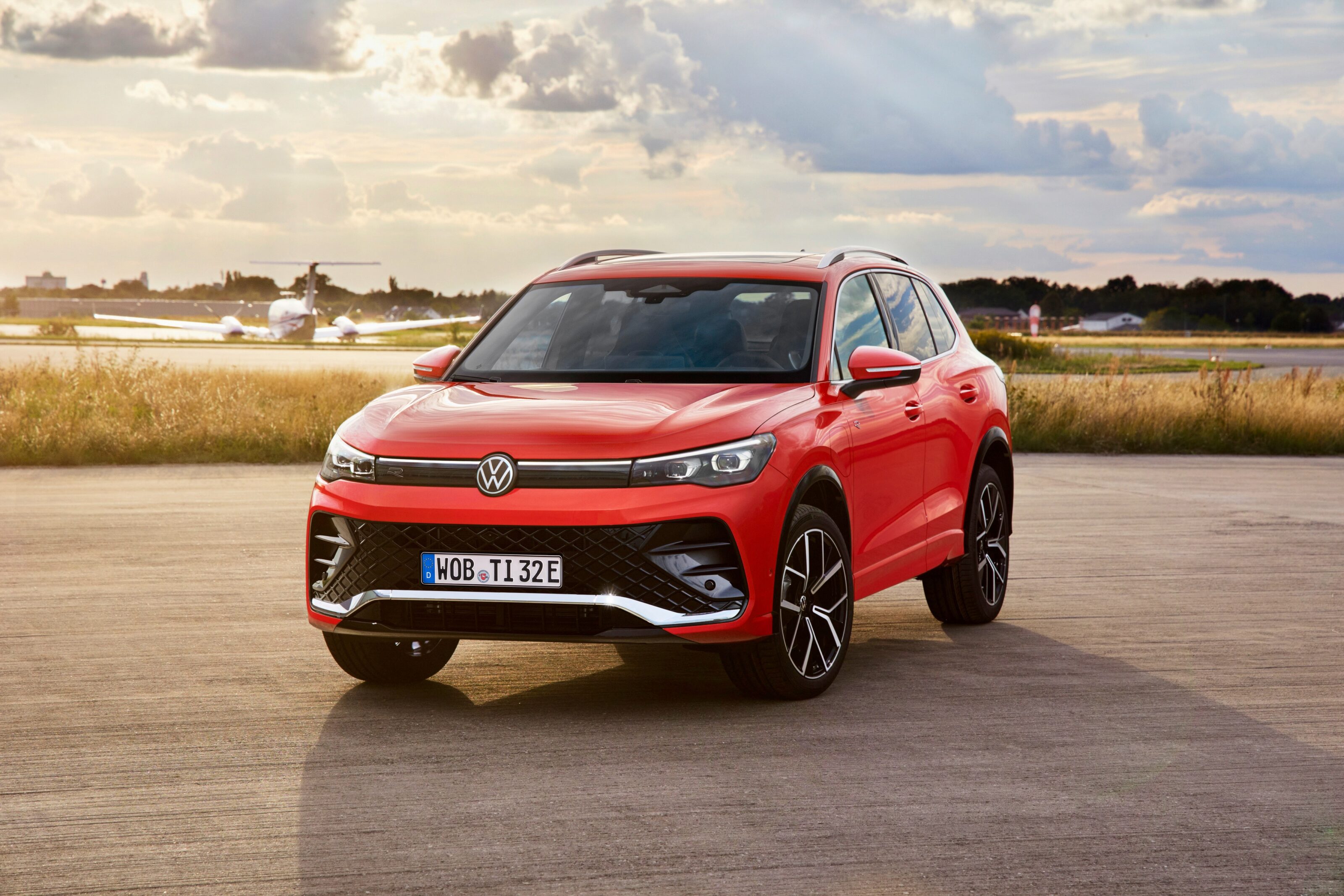UPDATE: We’ve now driven a prototype of the Ariya, see our review at the link below!
The story to here
Nissan has ripped the covers off its newest crossover, the Ariya.
Let’s run down some key stats before we get into the nitty gritty. Nissan claims this new family hauler is capable of sending 290kW and 600Nm to all four wheels, thanks to an 87kWh battery and electric motors front and rear.
Anyone with even a passing knowledge of electric cars will understand that means the Ariya can accelerate from a standstill at an impressive rate. Nissan claims its flagship variant can crack 100km/h from a standstill in 5.1 seconds – that’s just one tenth slower than Lexus’s V8-powered LC500 grand tourer.
Both two-wheel-drive (which send power to the front) and all-wheel-drive versions will be available, while there are two different sized batteries available for both.
The smaller of the battery packs is rated at 63kWh, while the larger is the aforementioned 87kWh.
Kicking off the Ariya range is the 63kWh two-wheel-drive variant, with 160kW/300Nm, a 0-100km/h time of 7.5 seconds, and a claimed range of up to 450km pending homologation on Japan’s WLTC testing regime.
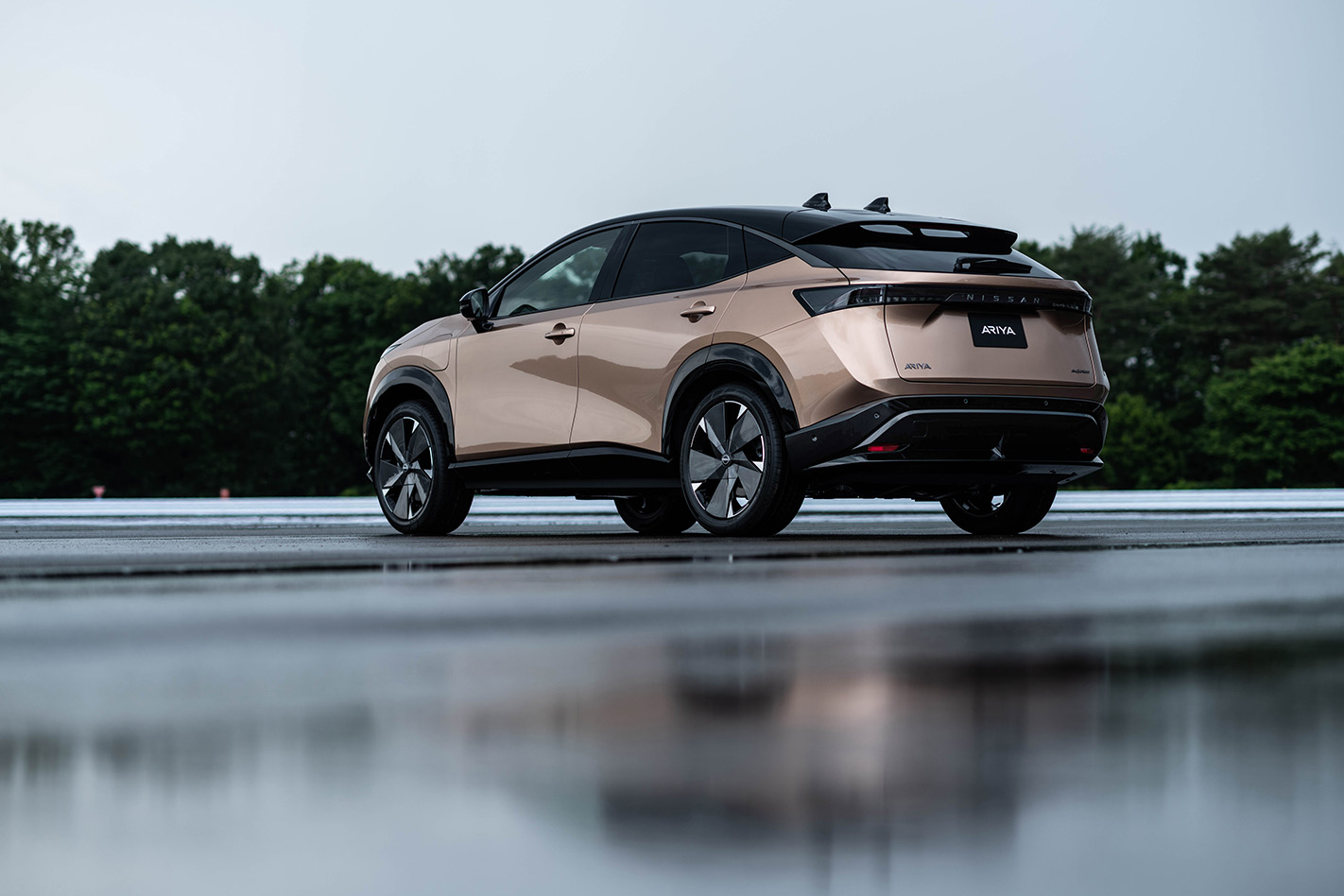
Next is the two-wheel-drive 87kWh variant, with 178kW/300Nm, a 7.6 second claimed sprint to 100km/h, but the longest potential electric range of the group of up to 610km.
The 63kWh all-wheel-drive model has claimed power outputs of 250kW/560Nm, a brisk 5.4 second claimed 0-100km/h time, and range of up to 430km.
Sitting atop the range is the 87kWh all-wheel drive, which along with its impressive power and acceleration, has a claimed WLTC range of up to 580km.
Nissan says the new crossover will weigh in at between 1900-2200kg depending on the variant, with all measuring in at 4595mm long, 1850mm wide, and 1655mm tall. There is 466 litres of cargo space in two-wheel-drive variants, and 408 litres in all-wheel drive.
The Ariya is built atop an all-new Nissan alliance-developed platform, dedicated to EV vehicles, with engineers making the most of the powertrain to stretch the new crossover’s wheelbase to 2775mm.
The climate control systems are located under the bonnet in place of where the internal combustion engine would traditionally be located.
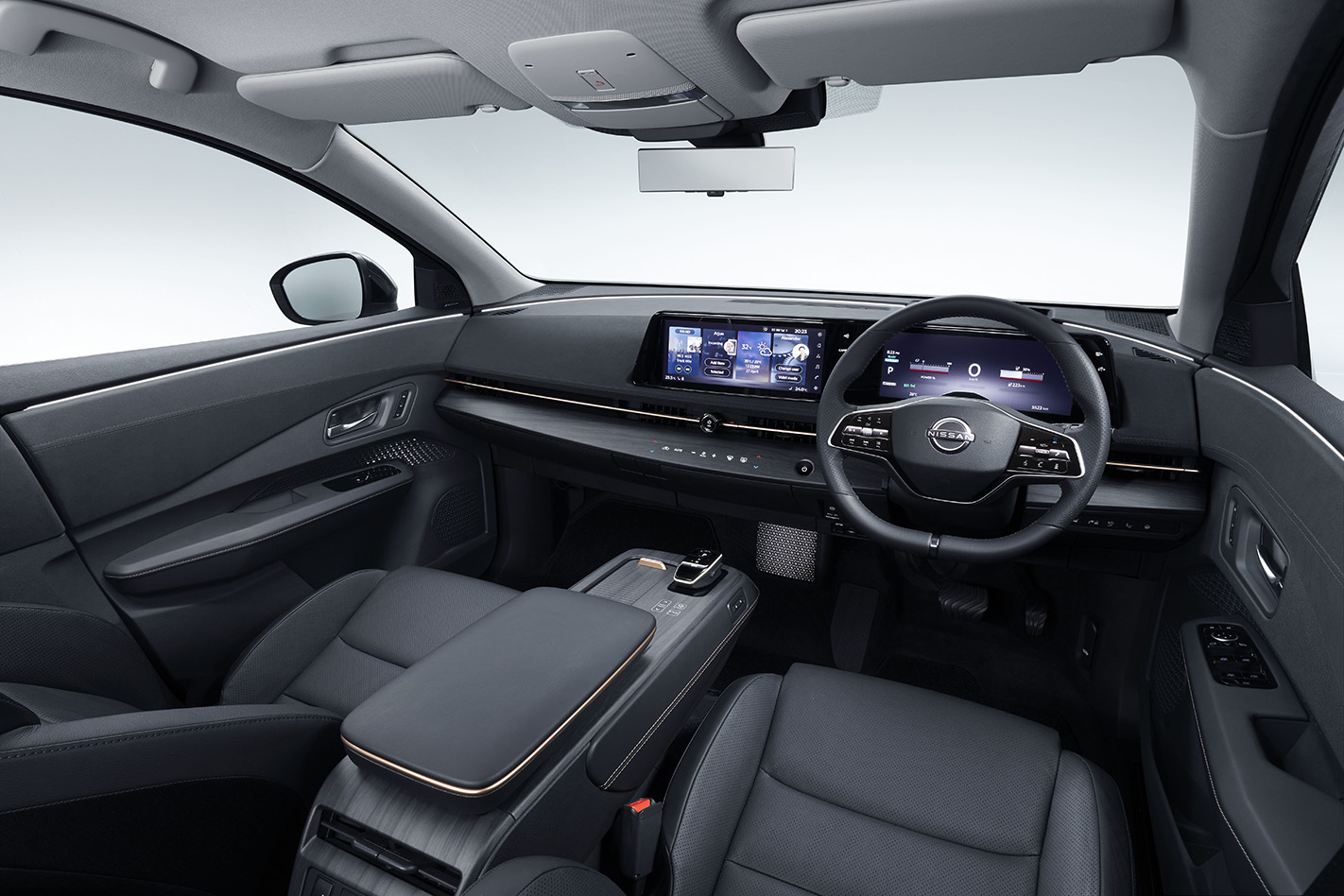
Nissan claims it has achieved a weight distribution of “nearly 50:50”
“We also incorporated high-performance dampers, a sporty multilink suspension and soft motor mounts to really enhance the vehicle’s handling,” Development Chief Product Specialist Makoto Fukuda said.
While EVs are renowned for their swift ability from a standstill, this wasn’t the only priority for Nissan, with Fukuda adding “I don’t consider just being fast in a straight line to be an intelligent use of power.”
“The Ariya is fast in a straight line, but it provides maximum, usable performance in various driving situations, such as on a snowy mountain road or on wet city streets”
Read next:
It’s not all about performance and dynamics though – this is a family car after all. Nissan says it has focused on improving the EV’s range, building a battery thermal control feature it says “constantly optimizes the operating temperature of the liquid-cooled battery”.
Using 130W charging, Nissan says the Ariya can gain 375km of range in 30 minutes.
There’s also the latest version of Nissan’s automated driver assistance system, which is fitted as standard on the 87kWh all-wheel-drive variant. Nissan claims it “offers hands-off single lane highway driving capability”.

The system is made up of seven cameras, five millimeter-wave radars and 12 ultrasonic sonar sensors, and uses a dedicated shark fin antenna for accurate GPS positioning.
The exterior of the Ariya is suitably futuristic for a fully-electric SUV, moving away from the more pedestrian styling of the Leaf. It’s inside the cabin that things begin to ratchet up a notch.
Nissan describes the interior as being akin to a “sleek cafe lounge on a starship”. While the PR department has clearly been watching too many episodes of The Expanse, the design team has made a considered effort to make the Ariya’s cabin as airy as possible.
Nissan claims the crossover has the “most spacious cabin in its class”, with a dash that is “devoid of buttons and switches”. Climate control functions are operated through haptic switches in the wooden centre dash.
This may be great visually, but we’ll retain judgment until we get hands-on with the car.
Inside there are also twin 12.3-inch screens that Nissan dubs “the monolith”, providing occupants with all their driving and infotainment information.
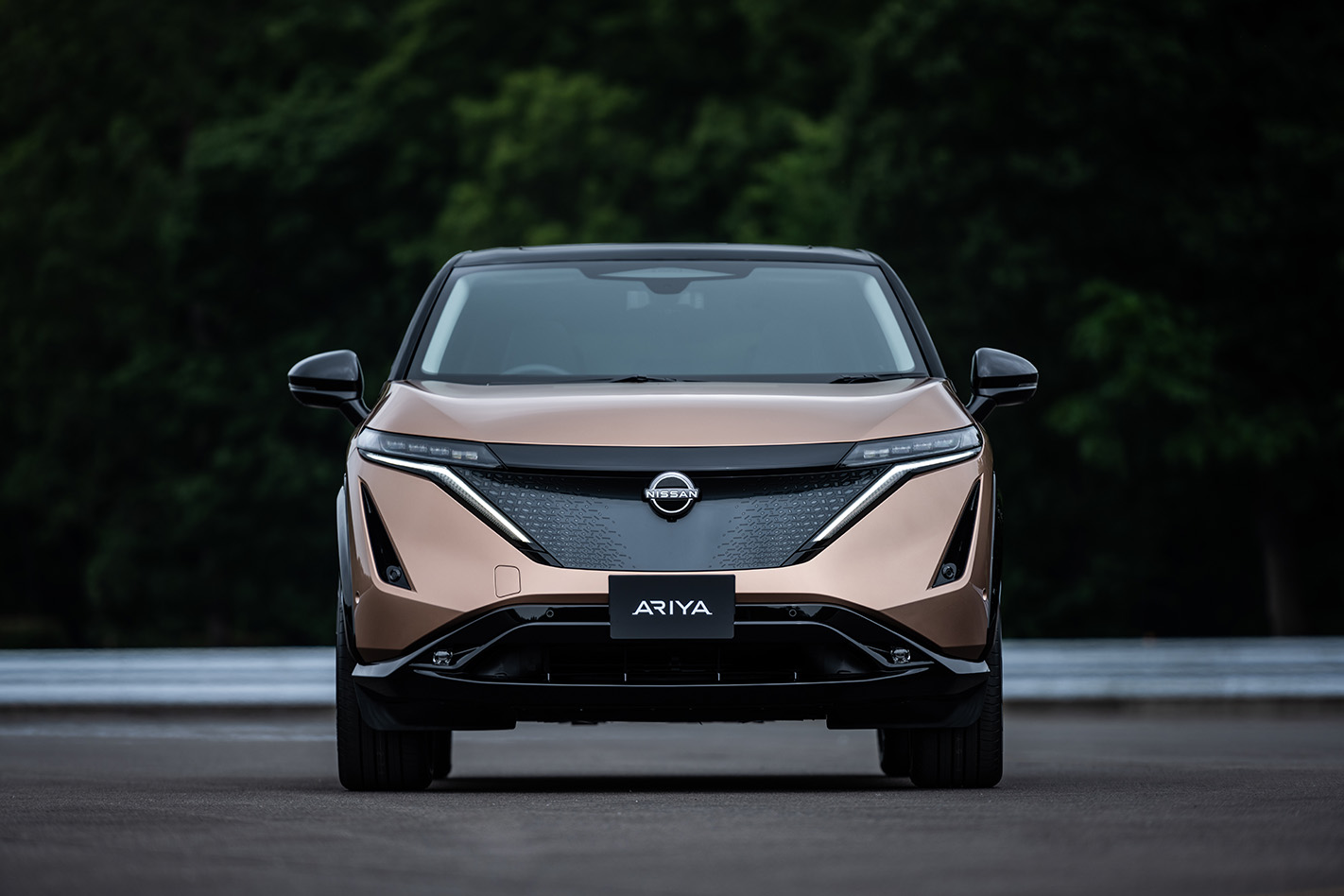
There’s even a centre storage box and foldout tray located under the instrument panel that can turn the Ariya’s cabin into a mobile office.
Amazon’s Alexa personal assistant is built into the car’s systems. The voice-activated feature can play music, place calls, listen to audiobooks, and control smart home devices.
This pairs with Nissan’s own “intelligent personal assistance technology” that can help with in-vehicle features.
Much like Mercedes-Benz’s MBUX system, the in-car assistant can be activated by saying “Hey Nissan”, and then make a verbal request.
The Ariya is expected to begin deliveries in its native Japan from mid-2021 with an estimated starting price of roughly ¥5 million (A$67,040). Sales in Europe, North America and China are expected by the end of 2021.


